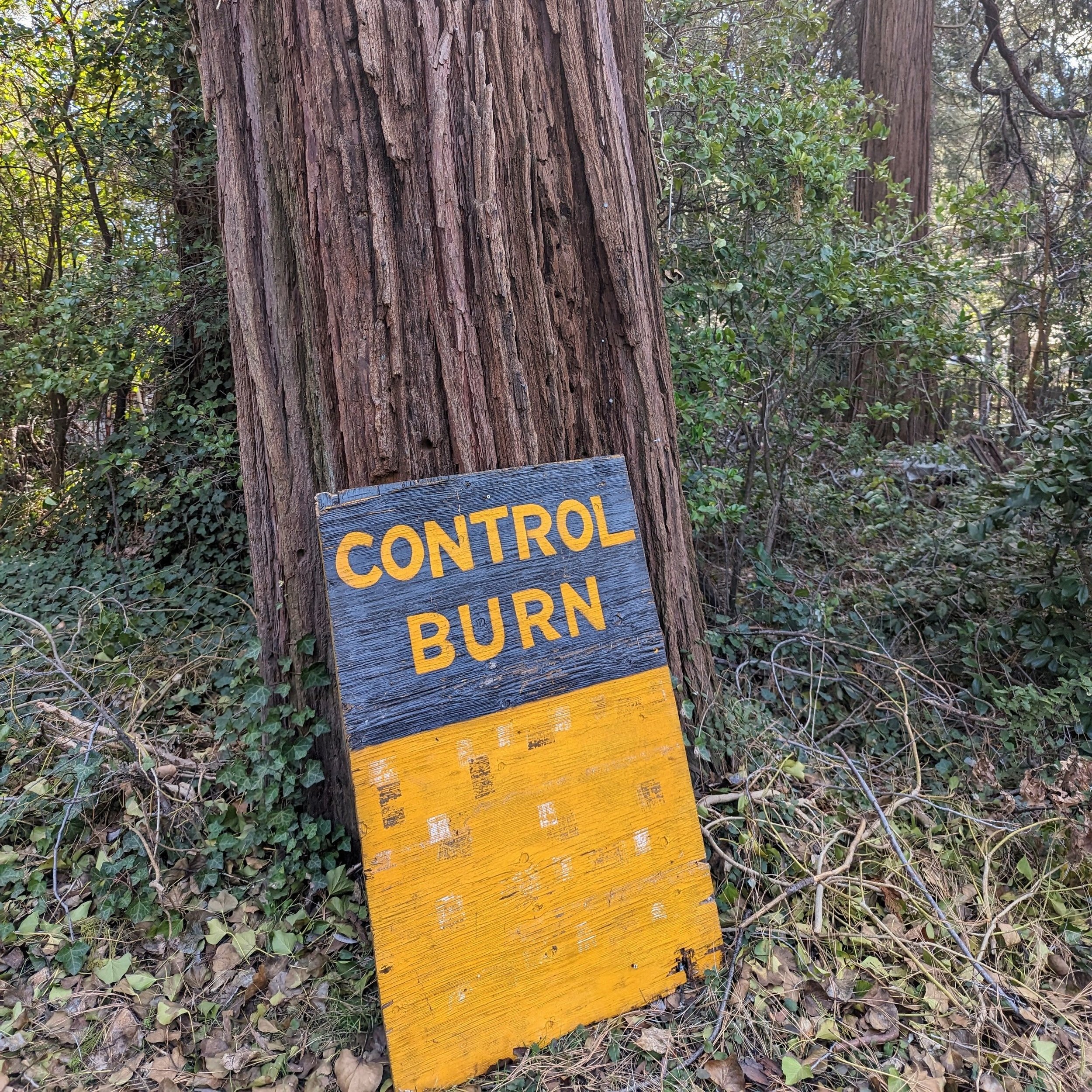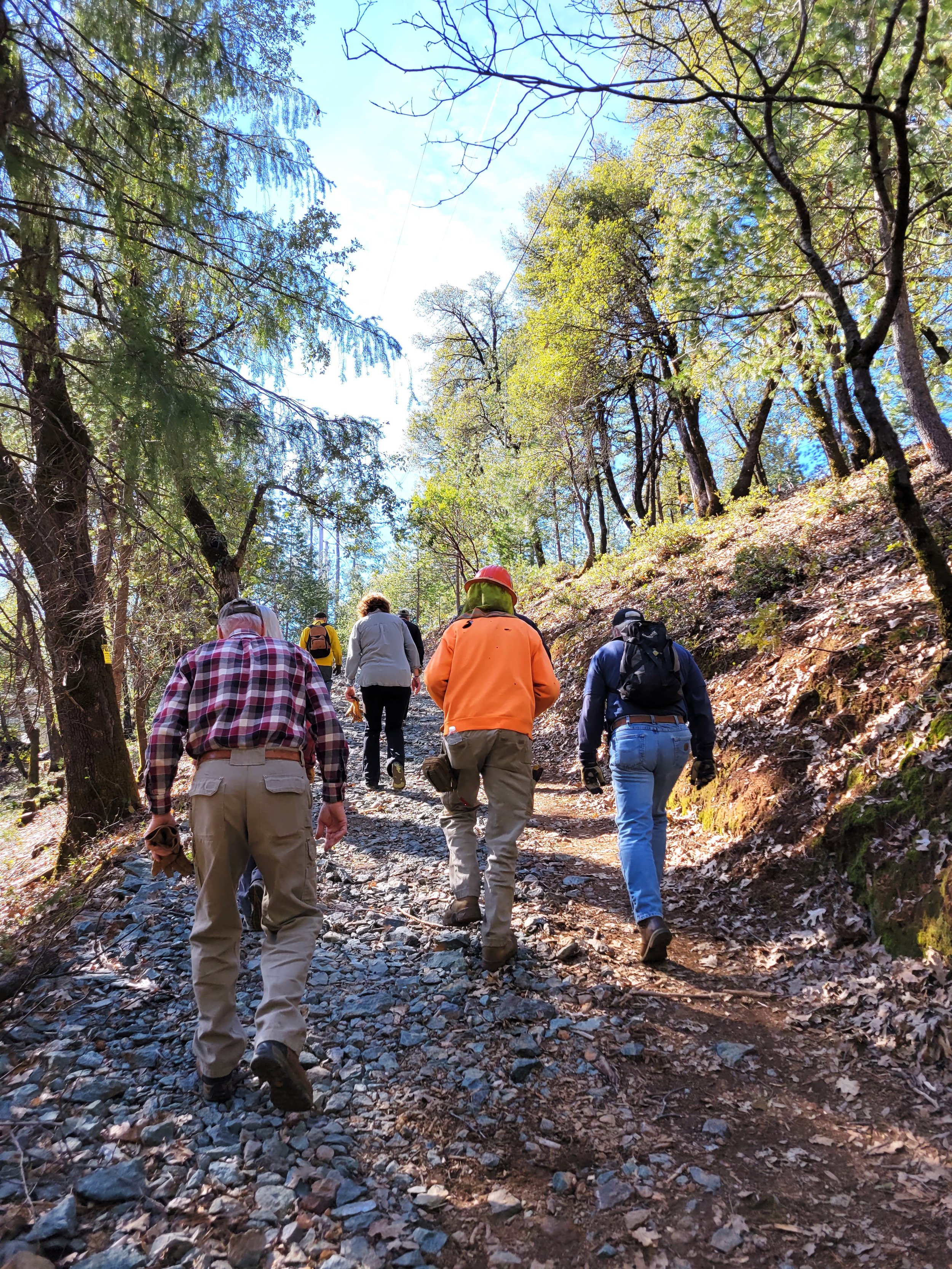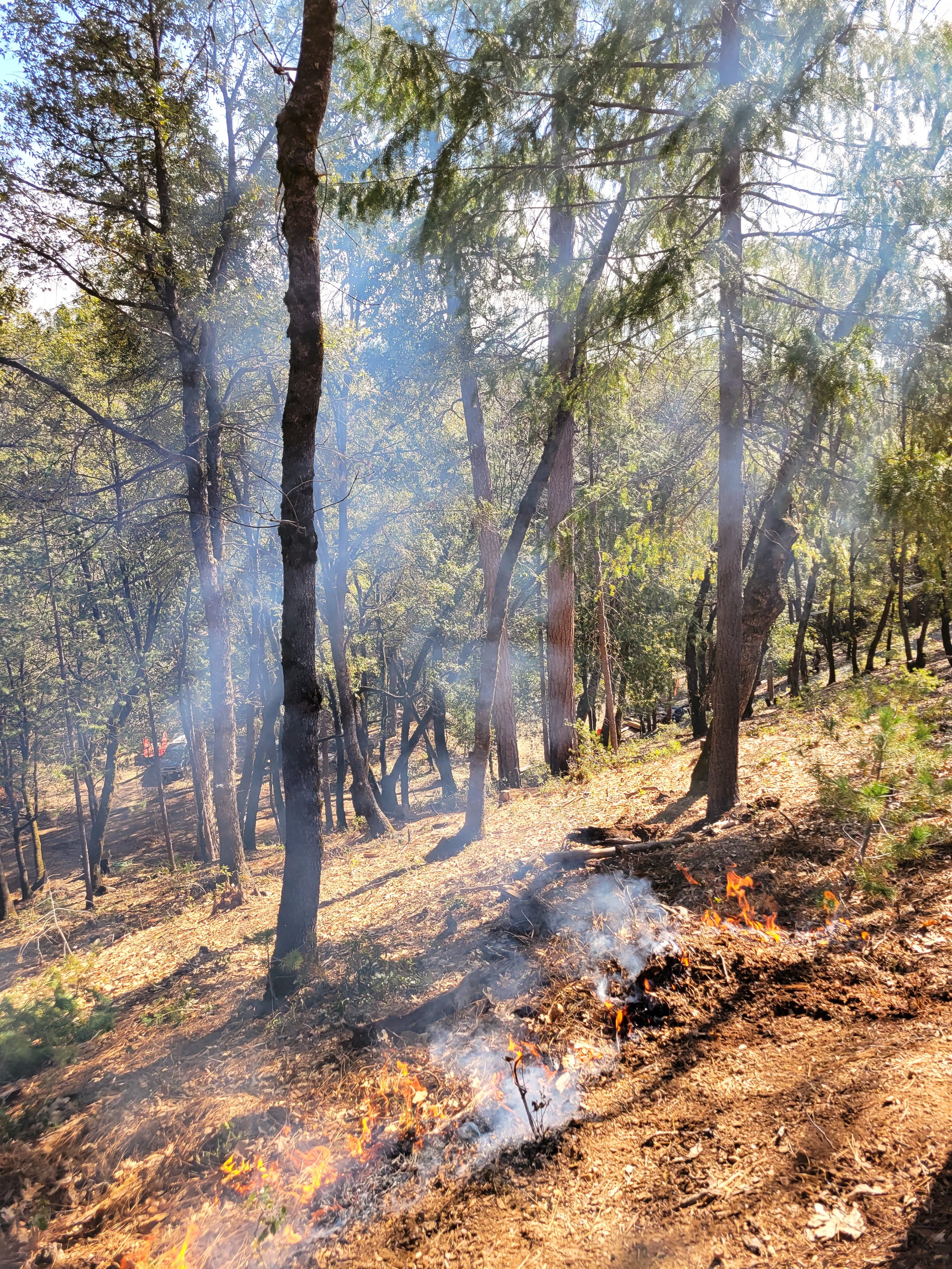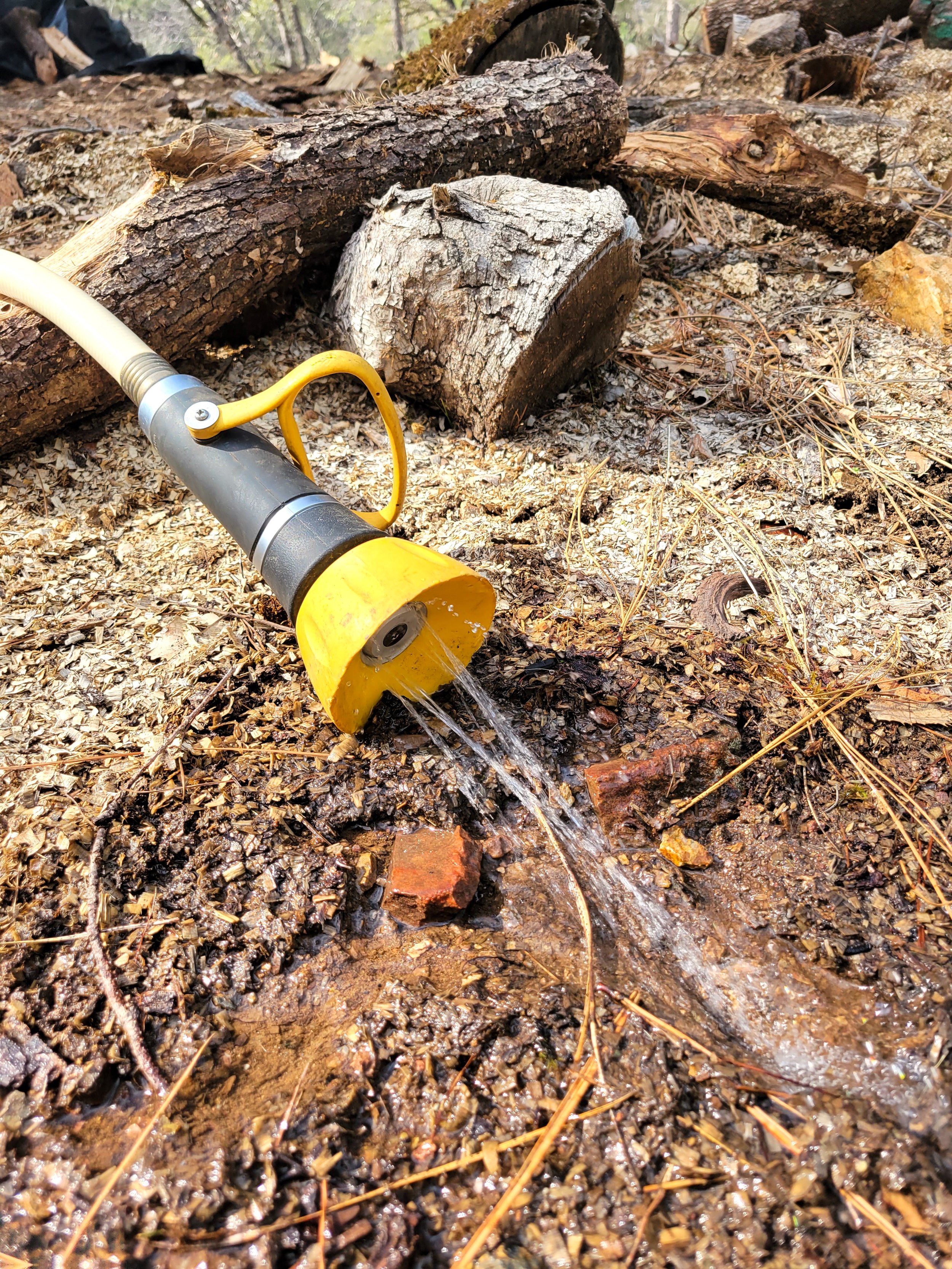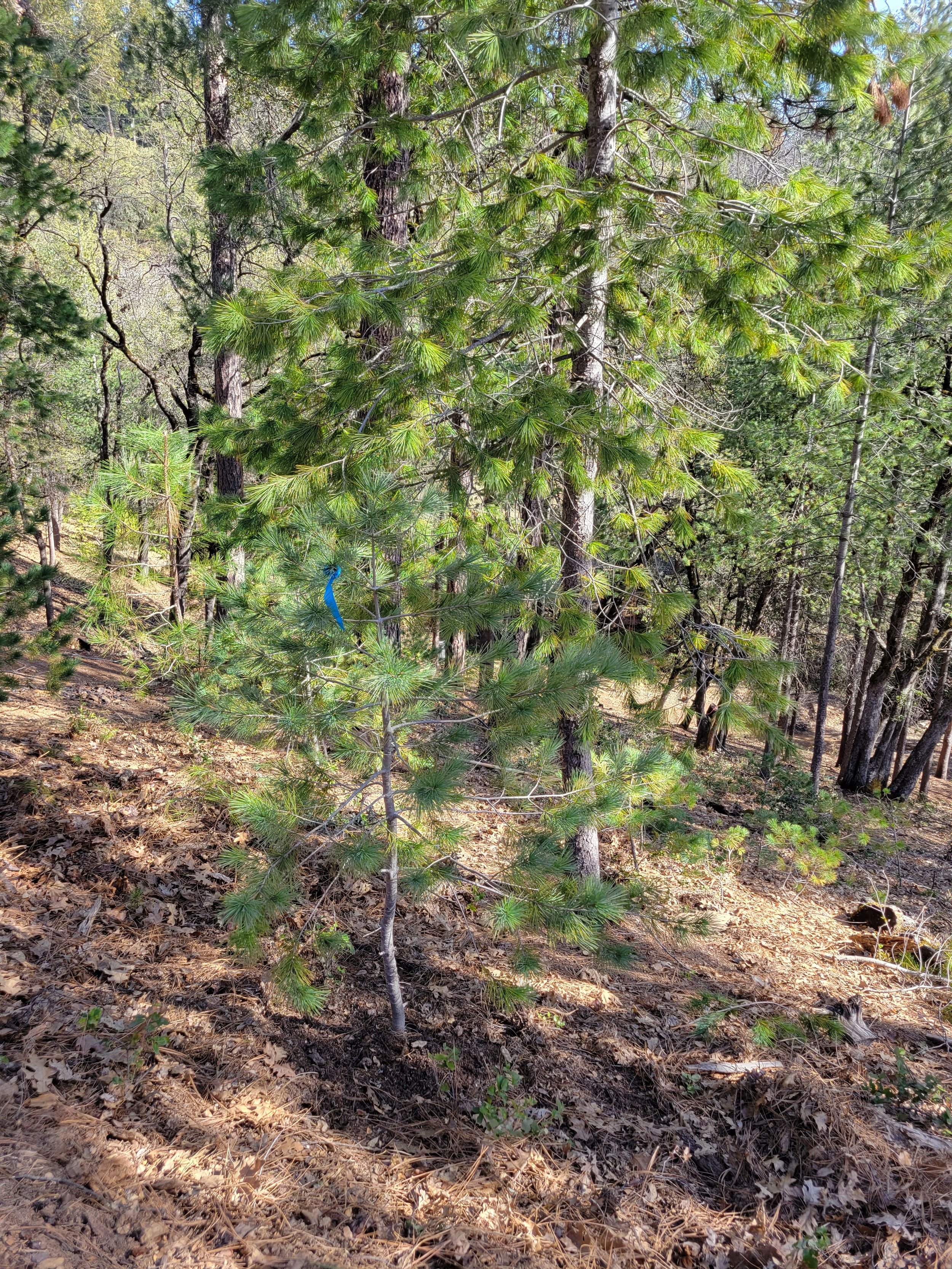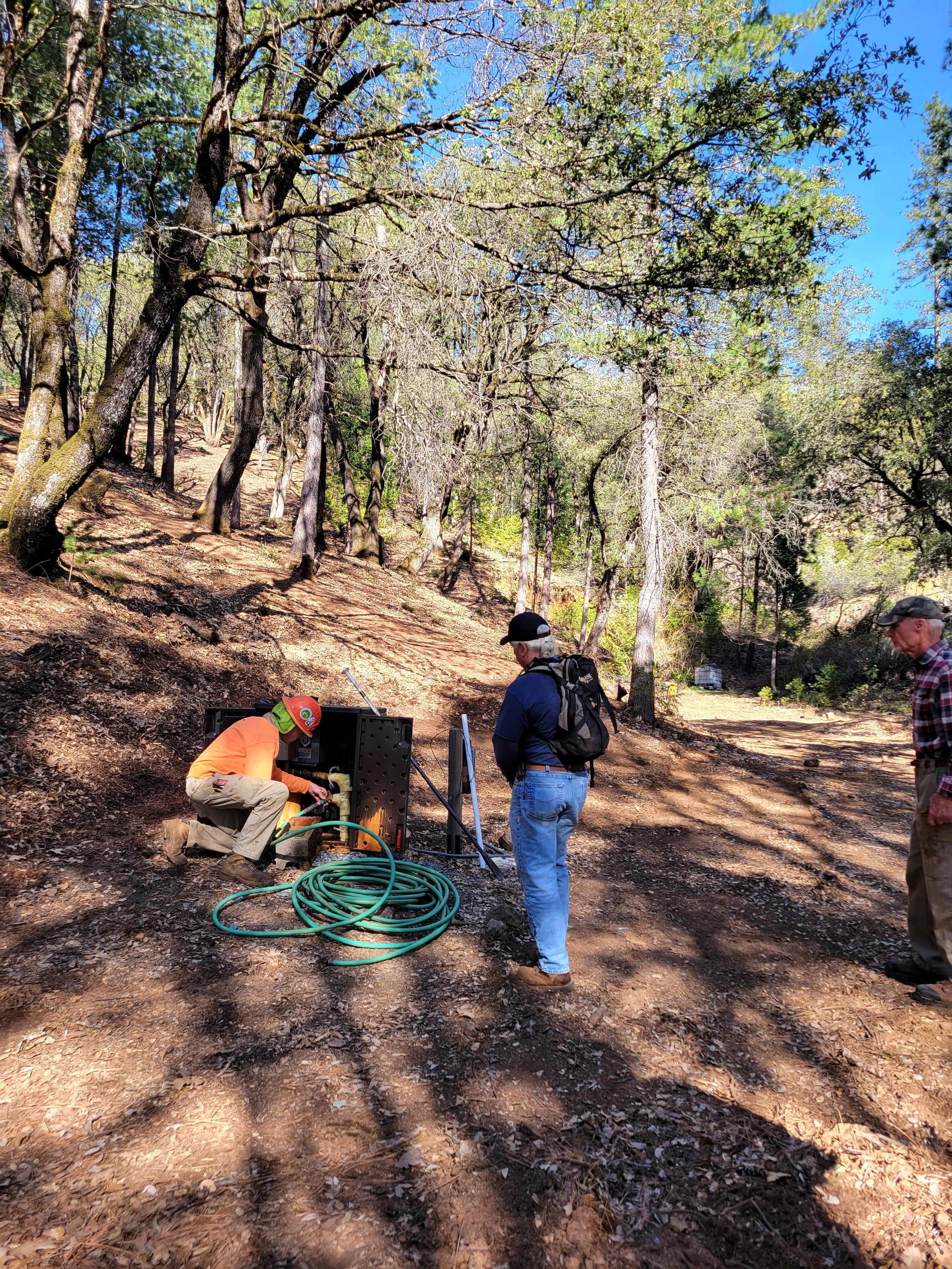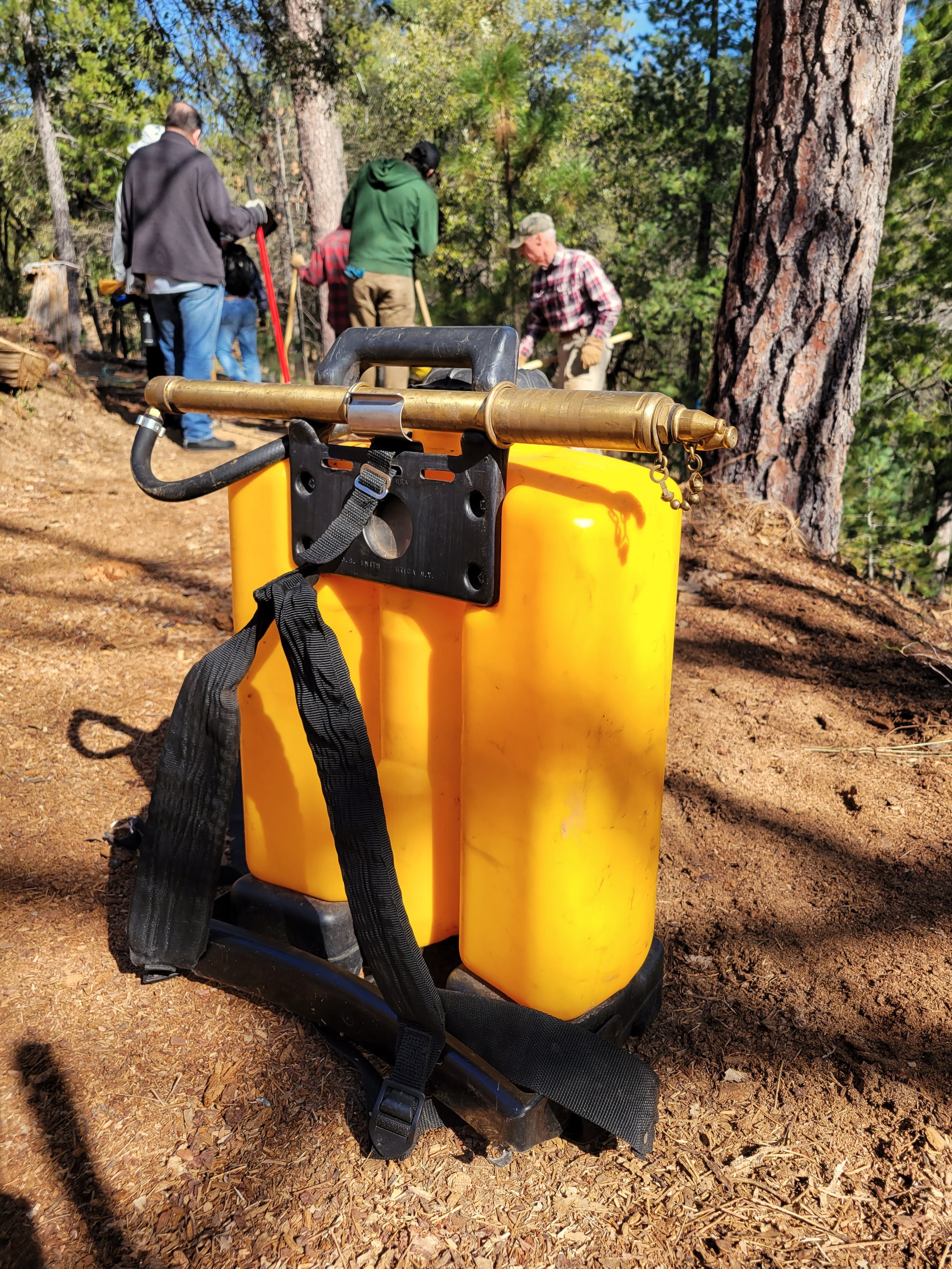By Jenn Merrill
Grass Valley, CA—Last week, I had the opportunity to participate in my first prescribed burn. Matt and I are members of the Lower Colfax Firewise Community (LCFC). This burn was organized by LCFC property owner, Matt Miller, in coordination with Registered Professional Forester and prescribed fire expert, Dario Davidson. Dario is key member of the Yuba Bear Burn Cooperative, which aims to, “Build a knowledgeable public capable of burning in a safe, legal, beneficial, and responsible manner. Empower private landowners through education, networking, and volunteer labor to practice good fire.”
The burn took place in Grass Valley, not far from HWY 174 and Empire Mine. For decades leaf litter and downed material have accumulated on this forest floor. The intent was to clear out some of this flammable material, so if a fire were to occur, there would be less material to burn. Low intensity fire is helpful for the ecosystem and can reduce catastrophic fire in the future. Read more about how forest stewardship is the key to managing fire risk on your property and how to manage it.
Prescribed Burn Plan
Twelve volunteers from the Lower Colfax Firewise Community participated. We spent about 45 minutes reviewing the Prescribed Burn Plan, walking the perimeter of the project. Native plants that Mr. Miller wanted to protect from the fire, like sugar pine saplings, were marked with blue flagging. Other orange flagging hung from larger trees to serve as directional wind indicators. All neighbors were notified of the burn in advance in addition to the local Ophir Hill Fire Department.
Communication & Risk Management
Before Mr. Miller lit the ground with a drip torch, we reviewed fuel moisture and humidity levels, the temperature and the extended forecast. We discussed how important it was to check on the weather not just for that day, but for the next day or two. I was impressed, but not surprised, with how organized Mr. Miller and Mr. Davidson were! Water sources were positioned around the entire perimeter of the burn. We discussed our goals for the day, keeping the fire contained and maintaining a slow burn. We also reviewed potential hazards like the lighting of large stumps at the perimeter of the fire. This could lead to unintended spread across our fireline. I learned about “rollers”, large loose pieces of wood that could catch fire and roll downhill, moving the fire further along faster than planned. Each volunteer was armed with a McLeod tool for suppressing the fire should the need arise. The initial fireline was lit at the top of the hill at the highest point on the leeward side.
Increasing Fire Resiliency at the Neighborhood Level
The burn on Mr. Miller’s property ties into another fuel reduction project taken on by the Lower Colfax Firewise Community this past winter, which was the Rhoda Road Evacuation Route Fuel Reduction and Shaded Fuel Break project. Mr. Miller and Mr. Davidson helped secure two grants provided by the Nevada County Office of Emergency Services for projects in the firewise community. YFR Tree & Land Management was proud to provide masticating services for both of those projects.
It’s never too early to start thinking about fire season and how to create a more resilient property. Give us a call for a free property evaluation, 530-205-3352. We would love to help you increase your defensible space and manage your forest for future generations.

